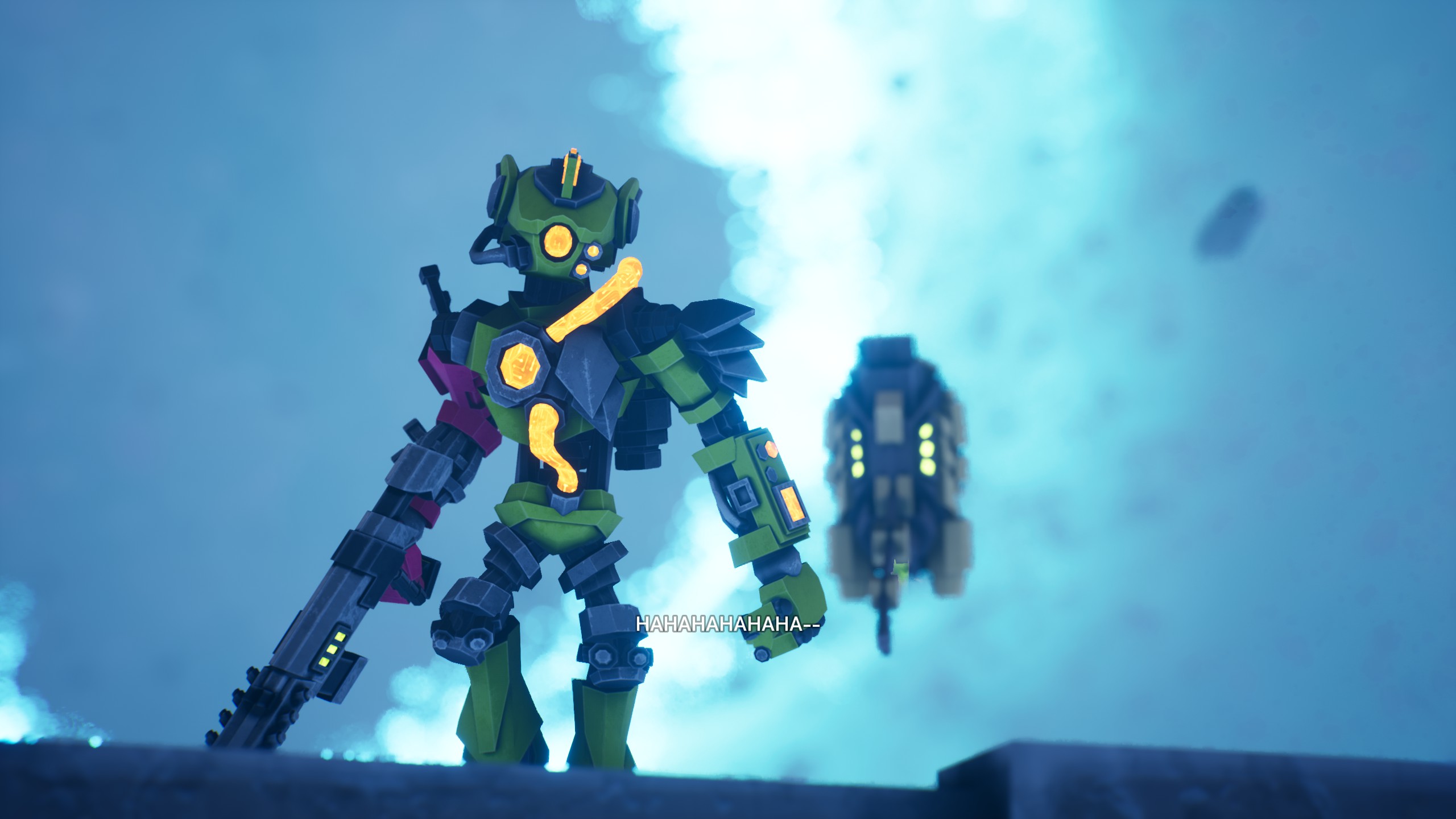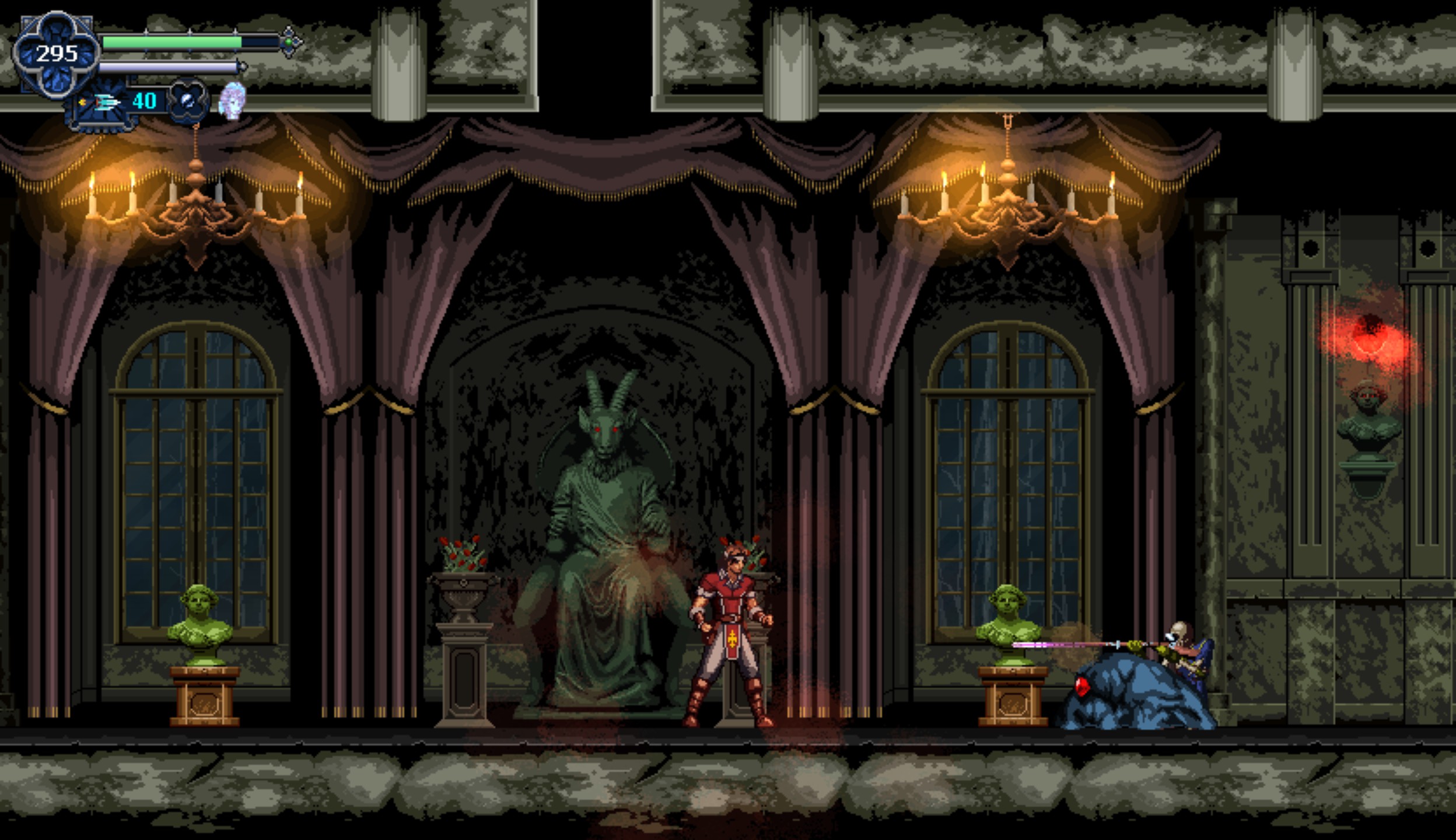One look at Akimbot made me and every other series fan think it was going to be an indie attempt at a Ratchet & Clank game. In reality, it absolutely isn’t. It’s certainly inspired by that series, but the game structure is totally different. Upon closer inspection, I realised the game was developed in part by the sole dev behind Pumpkin Jack, a game I’m fairly lukewarm on. While the presentation and dialogue are fairly generic and not all of the voice acting is great, I was continually surprised by how engaging and how much fun this game was, making it a hell of a good time overall.
Akimbot is about a mercenary robot named Exe (pronounced “ecksee”) who’s aided by a little drone called Shipset. The game has a ton of dialogue, most of which is between these two characters, who are both voiced by the same actor. Weirdly, the actor does very well with Shipset (although his voice is fairly annoying,) but kind of poorly with Exe. He’s good at being funny and wacky, but can’t pull off the edgy tough guy act without sounding horribly wooden. Granted, the characters are so generic that I can’t really fault him for having trouble, but some of the dialogue (which can be quite funny when it isn’t grating) does deserve better here and there.
Similar is the voice actor for the game’s villain, Evilware. However, his actor does well, he’s just miscast, in addition to laughing nearly the exact same way every time. The story is that Evilware has gotten an artefact that will allow him to take over the universe, so Exe and Shipset go off to stop him, getting thrown into the past on the way. The story itself is incredibly obvious and all the characters are familiar archetypes. Additionally, the characterisation is weirdly uneven, as both Exe and Shipset’s behaviour changes randomly.
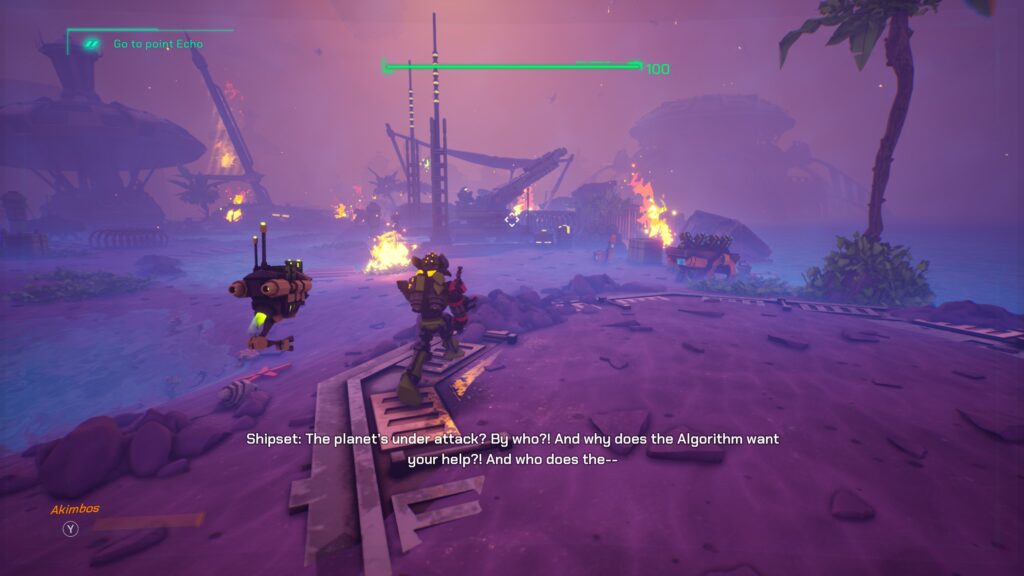
At first, Exe is obnoxiously edgy and sociopathic, while Shipset is much more empathetic and reasonable. A few levels in and Exe’s much more tolerable and less of a whinger and Shipset starts acting like a sociopath. When combined with much of the less-than-satisfying voice acting, it all makes Akimbot‘s narrative underwhelming. Visually, the game also isn’t much to look at from a design perspective as the character designs are very generic and uninteresting, although the actual textures, animations, and models are quite good.
Akimbot is broken into over a dozen chapters that vary between run-and-gun platforming levels and a surprising amount of vehicle-based ones. The locations themselves tend to pick a single main colour and then have you jump around in a random wilderness usually covered by water or another liquid. Nearly every level is like this. At one point you find yourself on a spaceship but there’s still water everywhere. There’s little sense of place among these levels either. They’re mostly empty ground, so don’t expect memorable places.
Thankfully, the controls, action, platforming, and level pacing are all excellent. Exe can jump, double jump, swing his melee weapon, shoot, wallrun, and use a grappling hook. You get four guns over the course of the game – a machine gun, a sniper rifle, a rocket launcher, and a chaingun. Unfortunately they can’t be upgraded (definite missed opportunity,) but you can upgrade your special weapons twice with currency found in the levels. There’s a ton of platforming and it feels natural and responsive in a big way. The game really does feel great to play. The weapons are similarly nice, although I do wish there was a shotgun. You don’t need to pick up ammo, as weapons operate on a cooldown where you wait for ammo to recharge on its own.
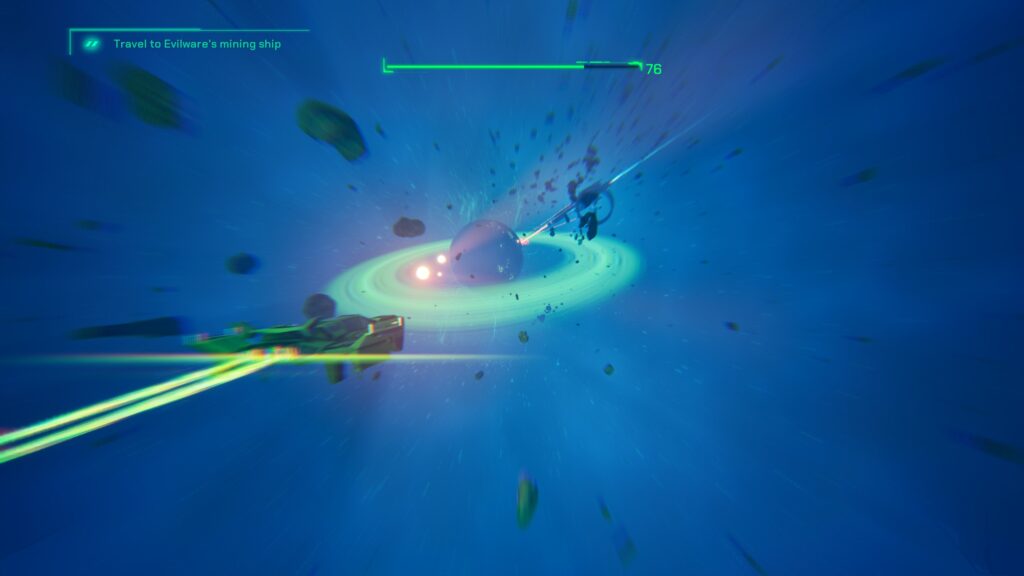
I didn’t tend to use the melee weapon much, as Akimbot is absolutely a shooter combat-wise, not horribly unlike Ratchet and Jak. On the normal difficulty, the game’s actually got a balanced level of difficulty that’s just right, save for a late-game spaceship section that was overkitted. Switching the game to easy actually felt right at home in terms of the difficulty curve when playing the rest of the game on normal. Spaceship sections are on rails and reminded me a lot of Rebel Assault of all things, requiring you to carefully pilot it while dodging debris and blasting enemies. There are also multiple car sections which are pretty good despite some wonky physics, and a tank section that was enjoyable. Some of the vehicle sections do go on too long, though. There are a few “figure out the door code” puzzles too, which are a solid change of pace.
Akimbot is great at changing itself up with regularity in a nearly expert way. No one type of gameplay starts to get old by the time the credits roll, which is some truly impressive pacing. I will say that the constant hacking minigame wasn’t very fun, though. This is mostly just a quick-time event that feels unnecessary. Aside from those and the vehicle sections, though, there are a lot of really great ideas in the levels themselves that make them play differently. The art direction, narrative, and character design may not do the game any favours, but the rest of the package fires on all cylinders to keep it afloat.
This is honestly a really great little game as long as the gameplay and level design are enough for you. It’s a decent length too, taking about 9 hours to get through, plus more if you try and hunt for the game’s collectible text logs. I greatly enjoyed my time with Akimbot and can easily recommend it. However, I might play it with the voices off next time.
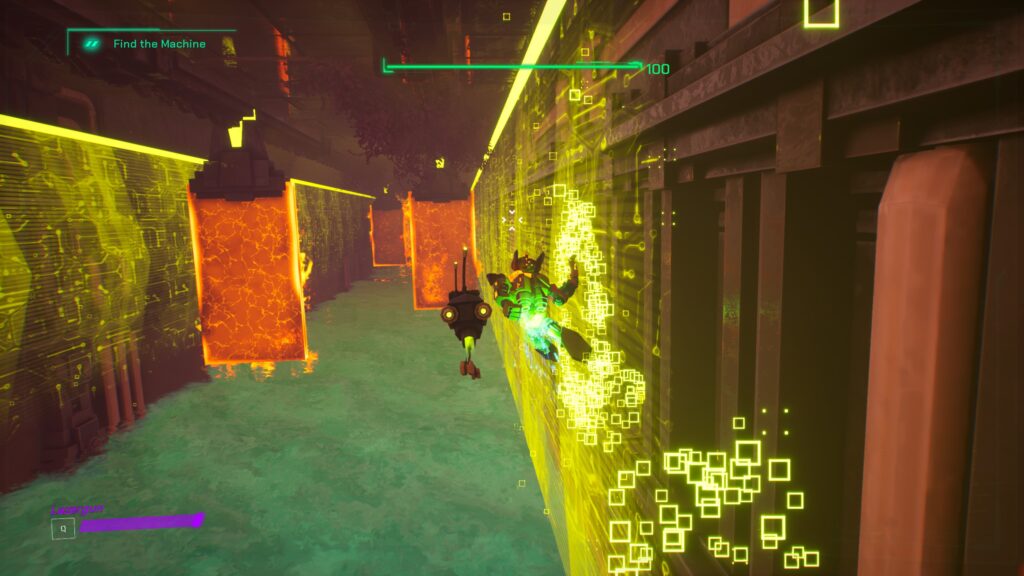
Akimbot: Akimbot won't win many points for its art direction, characters, or story, but the game design and gameplay are all extremely high quality, especially coming from such a small team. – Andrew Farrell
Take a look at our previous review:
Gundam Breaker 4 PC review – Return to form |

